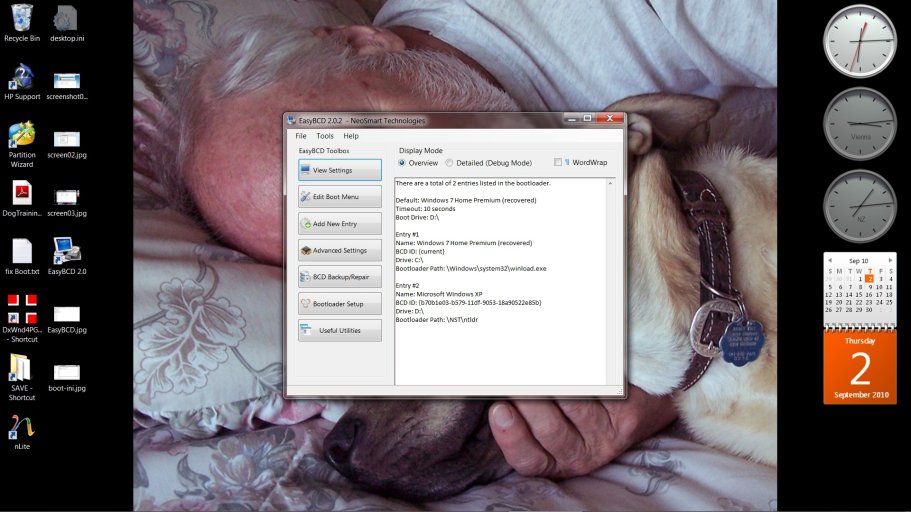Alsenor
Member
Sorry, I checked the wiki troubleshoot site as is suggested by your "read this first" page, but it only talks about the ntldr file, not the "NST/ntldr".
In a nutshell:
I have 2 HDD, with W7 on the first, and XP on the second drive.
I have successfully arrived at getting a dual boot screen for my W7 and XP installations, but can only boot into W7.
When I select XP I get an error msg, saying I should insert the installation disc and do a "repair", as well as this:
FILE \NST\ntldr
The selected entry could not be located because the application is either missing or corrupted.
I already did a repair install, which didn't change anything except that I couldn't boot into either OS after, and had to use the rescue CD to get Windows 7 working again.
How do I get this \NST\ntldr file where it can be located by the bootup process?
In a nutshell:
I have 2 HDD, with W7 on the first, and XP on the second drive.
I have successfully arrived at getting a dual boot screen for my W7 and XP installations, but can only boot into W7.
When I select XP I get an error msg, saying I should insert the installation disc and do a "repair", as well as this:
FILE \NST\ntldr
The selected entry could not be located because the application is either missing or corrupted.
I already did a repair install, which didn't change anything except that I couldn't boot into either OS after, and had to use the rescue CD to get Windows 7 working again.
How do I get this \NST\ntldr file where it can be located by the bootup process?

